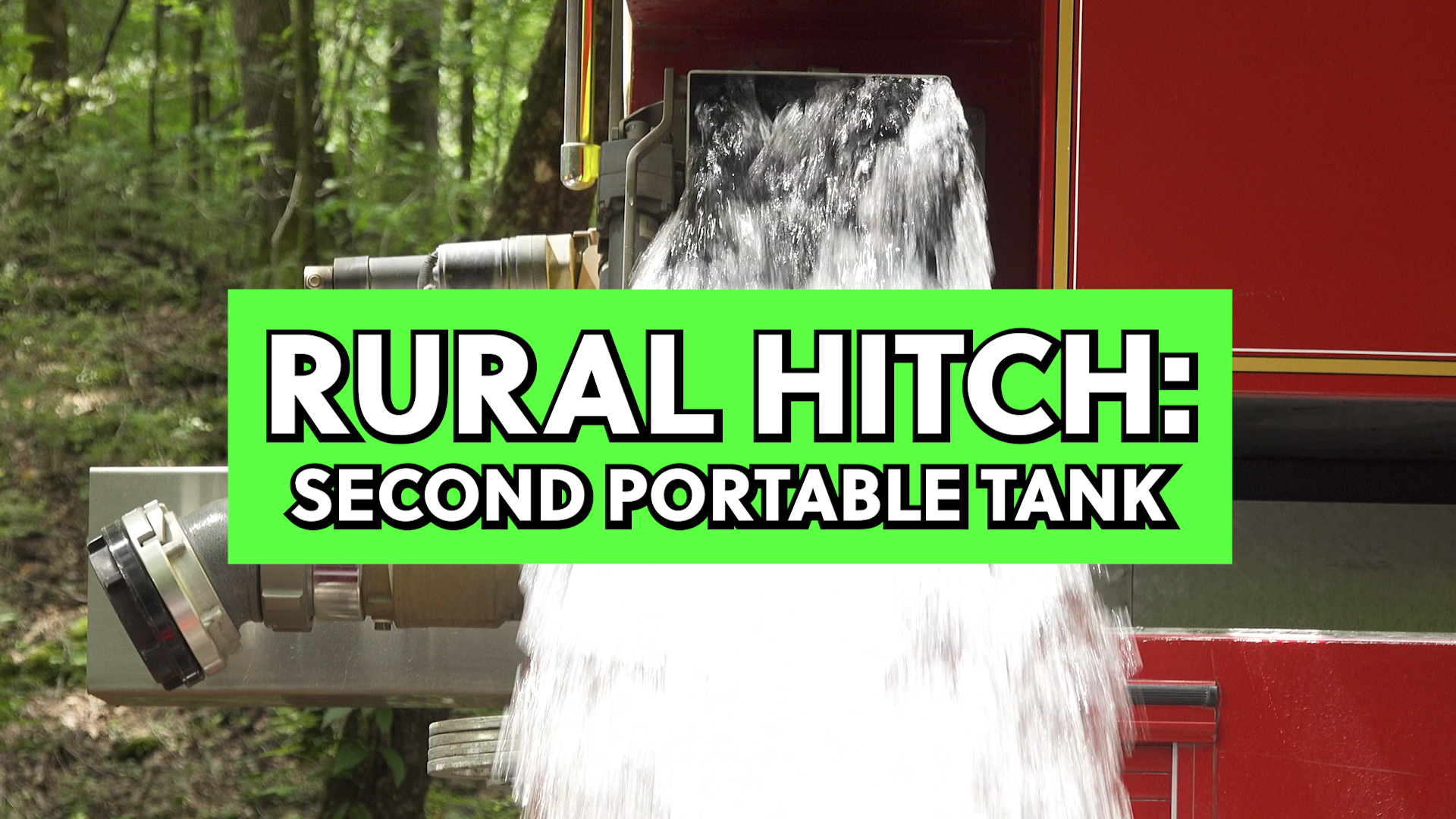Summary: When executing a rural hitch water supply operation, adding a second dump tank is a key step once initial water delivery is underway. After the next-arriving tanker offloads into the first tank, setting up a second tank and connecting them with a transfer tube ensures greater water volume and continuous flow to the fireground. This setup keeps the LDH line to the Clappered Siamese fed while maintaining operational flexibility and preventing delays.
How to Add a Second Dump Tank in a Rural Hitch Operation
Once the first dump tank is filling and the fireground engine is being supplied via the LDH line and Clappered Siamese, your rural water supply isn’t done evolving. The next step — often overlooked but critical — is setting up a second portable tank.
Here’s why it matters and how to do it right.
Step One: Next Tanker Offloads into the Primary Tank
As the next tanker arrives on scene, it offloads water using its dump chute, typically located on the rear or sides of the vehicle. That water goes directly into the first portable tank — the one feeding your LDH line and, in turn, your clappered Siamese.
The dump site pump operator pulls a prime and continues pushing water into the supply line headed to the fire scene.
Step Two: Drop the Second Tank
With that initial water movement stabilized, it’s time to expand. As personnel free up, the second dump tank — or “pond” — should be placed nearby.
The goal? Increase available water volume on-site. Two tanks give you operational breathing room and allow tankers to dump more quickly without waiting for the first tank to empty.
Step Three: Connect the Tanks With a Transfer Tube
Here’s the key: these two tanks need to act as one. That’s where the transfer tube comes in.
Lay the tube between the first and second tank. It will allow water to flow from the second into the first, keeping the supply to your fireground engine uninterrupted — even as the dump site gets busier.
By using a transfer tube, you essentially turn two tanks into a single, larger reservoir.
Why This Matters
If you’re in a true rural setting without hydrants, every gallon counts — and so does every second. Adding a second tank:
-
Prevents backup at the dump site
-
Increases water availability for sustained attack
-
Keeps your LDH line consistently fed
It’s one of those small tactical choices that separates a smooth water supply from a stop-and-go mess.




Comments